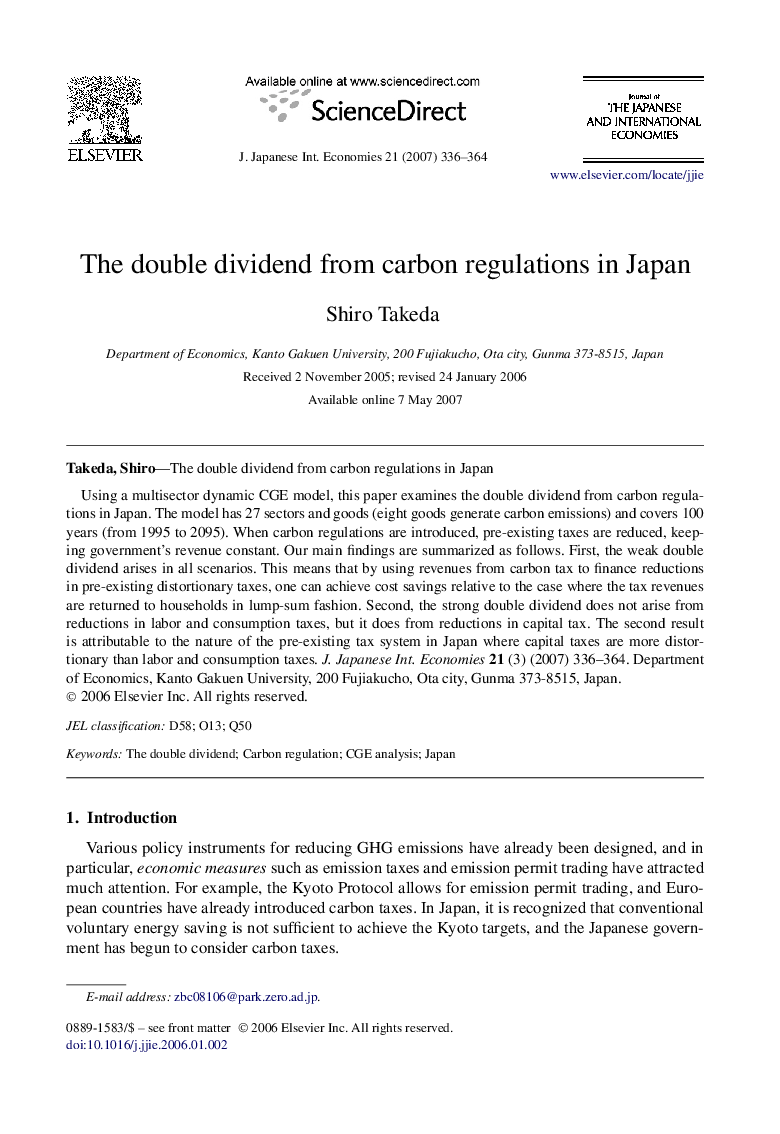| Article ID | Journal | Published Year | Pages | File Type |
|---|---|---|---|---|
| 965061 | Journal of the Japanese and International Economies | 2007 | 29 Pages |
Abstract
Using a multisector dynamic CGE model, this paper examines the double dividend from carbon regulations in Japan. The model has 27 sectors and goods (eight goods generate carbon emissions) and covers 100 years (from 1995 to 2095). When carbon regulations are introduced, pre-existing taxes are reduced, keeping government's revenue constant. Our main findings are summarized as follows. First, the weak double dividend arises in all scenarios. This means that by using revenues from carbon tax to finance reductions in pre-existing distortionary taxes, one can achieve cost savings relative to the case where the tax revenues are returned to households in lump-sum fashion. Second, the strong double dividend does not arise from reductions in labor and consumption taxes, but it does from reductions in capital tax. The second result is attributable to the nature of the pre-existing tax system in Japan where capital taxes are more distortionary than labor and consumption taxes. J. Japanese Int. Economies 21 (3) (2007) 336-364.
Related Topics
Social Sciences and Humanities
Economics, Econometrics and Finance
Economics and Econometrics
Authors
Shiro Takeda,
